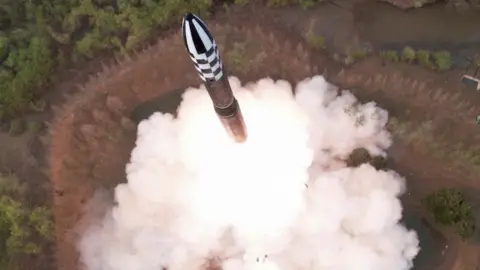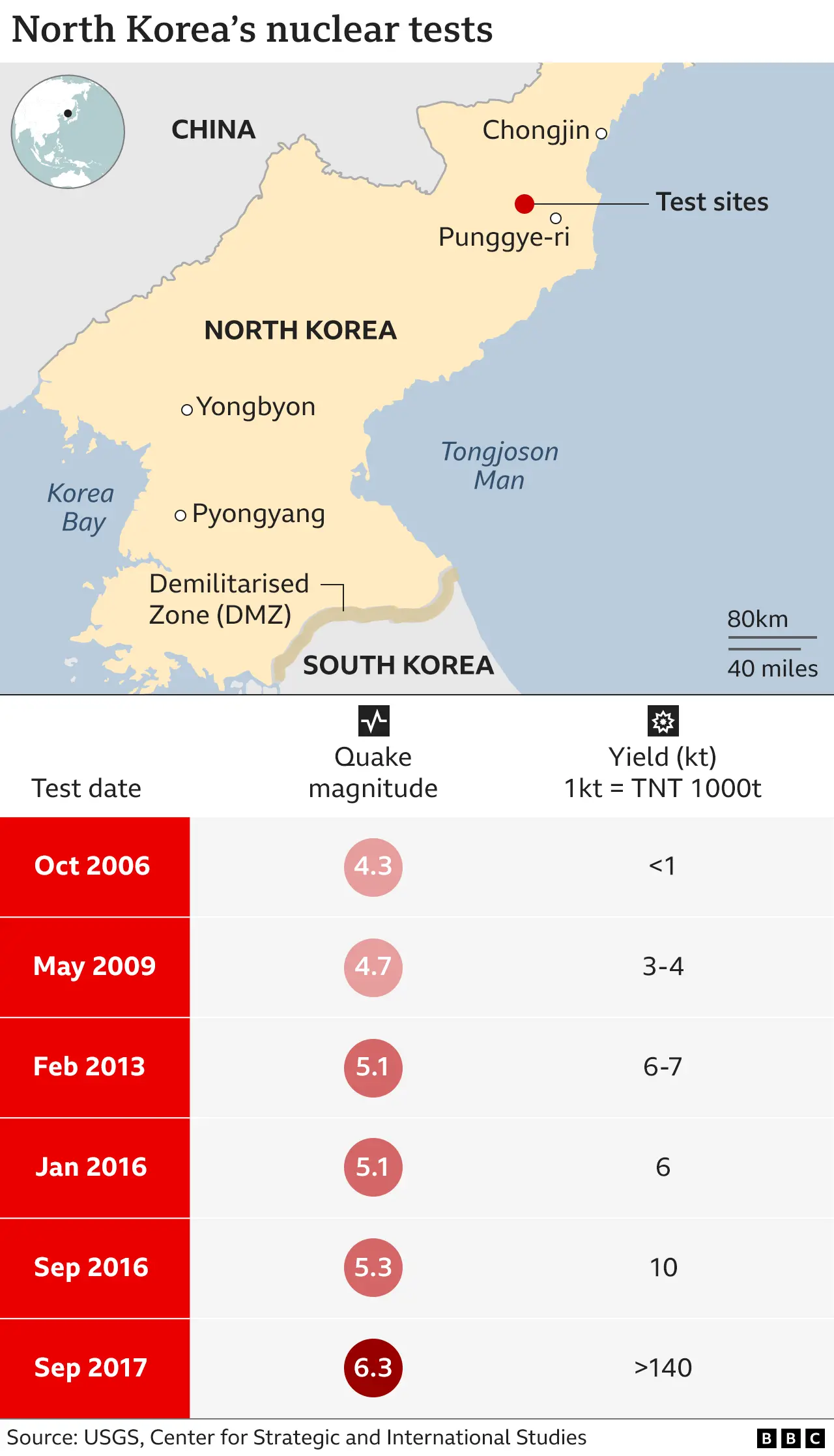North Korea: What missiles does it have?
 Reuters
ReutersNorth Korea's leader Kim Jong Un plans to meet President Putin this month about potentially providing Moscow with weapons for its war in Ukraine, according to a US official.
There are concerns that in return, North Korea may seek advanced weapons technology from Russia.
North Korea has continued regular tests of its missiles this year, after a significant increase in tests carried out in 2022.
Which missiles has North Korea been testing?
North Korea has tested a variety of ballistic and cruise missiles in recent years.
It's also tested hypersonic missiles, which can fly at several times the speed of sound and at low altitude to escape radar detection, as well as others launched from submarines.
In April, North Korea tested what it called "its most powerful" missile to date - the Hwasong-18. It's a solid-fuel missile, which are generally quicker to launch than liquid-fuel ones.
It reportedly flew about 1,000km on its maiden flight, but its true range is estimated to be in excess of 15,000km, according to the US-based CSIS Missile Defense Project.
A second test launch in July 2023 saw a Hwasong-18 reach a claimed altitude of over 6,600km, with a flight time of 74 minutes.

In November last year, an intercontinental ballistic missile was tested at a high angle, short-range trajectory. Launched at a lower trajectory, this same missile could have reached the US mainland, according to the Japanese government.
Images from North Korean state media of Kim Jong-un with his daughter at the launch appear to show it was the Hwasong-17 - or possibly a modified version of it.
The missile is believed to have a range of 15,000km or more, and could potentially carry three or four warheads, rather than only one. Several earlier attempts to launch the Hwasong-17 are thought to have failed, although it may have been used in a test carried out in March 2022.
In October last year, North Korea fired another type of missile which flew over Japan - thought to have been the intermediate-range Hwasong-12. This can travel up to 4,500km - putting the US island of Guam in the Pacific within range.
North Korea has also been testing the Hwasong-14 ballistic missile with a range of 8,000km - although some studies suggest it could travel as far as 10,000km, making it capable of reaching New York.
And there is the Hwasong-15 missile, which is believed to have a range of 13,000km, putting all of the continental US in its sights.
North Korea tested a record number of missiles in 2022, including ones capable of reaching US territory.

What nuclear weapons does North Korea have?
The last time North Korea tested a nuclear bomb was in 2017. The explosion at its Punggye-ri test site had a force, or "yield", of between 100-370 kilotons.
A 100 kiloton bomb is six times more powerful than the one the US dropped on Hiroshima in 1945.
North Korea claimed this was its first thermonuclear device - the most powerful of all types of atomic weapon.

However, North Korea may be aiming to test a smaller type of nuclear warhead with similar explosive force, according to Joseph Byrne, research fellow at the Royal United Services Institute.
"It seems they are now testing a new capability - a miniaturised warhead that can be fitted onto a range of missiles, including short-range missiles" he says.
Six underground tests have previously been carried out at Punggye-ri. However, in 2018 North Korea said it would shut the site down, because it had "verified" its nuclear capabilities.
Some of the tunnels into the site were subsequently blown up in the presence of foreign journalists. However, North Korea did not invite international experts to verify if it had been put beyond use.
Restarting North Korea's nuclear reactor
In 2018, North Korean leader Kim Jong-un made a promise to then-US president Donald Trump that North Korea would destroy all its nuclear material enrichment facilities.
However, the UN's atomic energy agency, the IAEA, says satellite images suggest that North Korea has restarted the reactor which makes its weapons-grade plutonium.
In September 2022, IAEA chief Rafael Grossi said there were signs that a test site at Punggye-ri was open again. And in March this year, Mr Grossi said that activity there as well as at Yongbyon was "deeply regrettable."
The IAEA has not had physical access to North Korea's nuclear facilities since April 2009.
